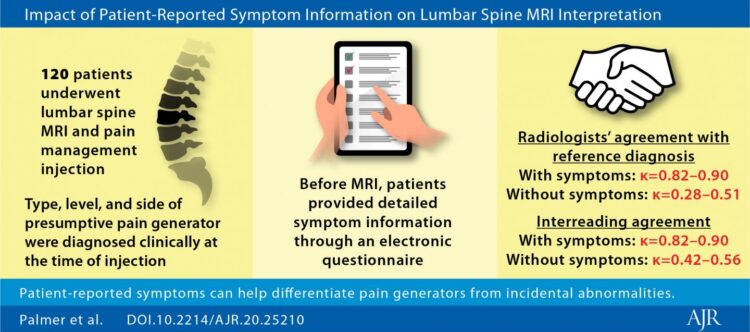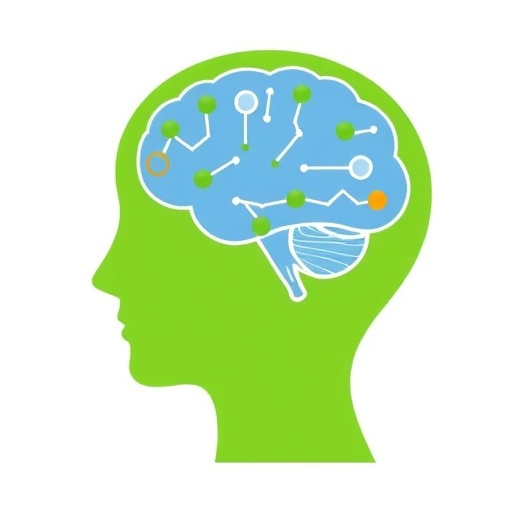Patient-reported symptom information from a brief questionnaire can be correlated with MRI findings to distinguish presumptive pain generators from incidental abnormalities

Credit: American Roentgen Ray Society (ARRS), American Journal of Roentgenology (AJR)
Leesburg, VA, January 25, 2021–According to an open-access article in ARRS’ American Journal of Roentgenology (AJR), in lumbar spine MRI, presumptive pain generators diagnosed using symptom information from brief electronic questionnaires showed almost perfect agreement with pain generators diagnosed using symptom information from direct patient interviews.
“Using patient-reported symptom information from a questionnaire, radiologists interpreting lumbar spine MRI converged on diagnoses of presumptive pain generators and distinguished these from incidental abnormalities,” wrote Rene Balza of the department of radiology at Massachusetts General Hospital.
Between February and June 2019, Balza and colleagues recruited 120 participants (70 men, 50 women; median age 64) from patients referred for lumbar spine injections; the participants completed electronic symptom questionnaires before injections. Six radiologists diagnosed pain generators in three research arms:
- MRI studies reviewed with symptom information from questionnaires;
- MRI studies reviewed without symptom information;
- MRI reports.
According to the Massachusetts General Hospital researchers’ results: “Radiologists’ agreement with reference diagnoses for presumptive pain generator type, level, and side on lumbar spine MRI was almost perfect when knowing symptoms (κ=0.82-0.90), versus fair-moderate without symptom information (κ=0.28-0.51) (p
Diagnostic certainty levels were highest for radiologists performing injections–“significantly higher for MRI review with symptom information versus without symptom information, the authors of this AJR article added.
###
Press passes still available for the ARRS 2021 All-Virtual Annual Meeting:
https:/
Founded in 1900, the American Roentgen Ray Society (ARRS) is the first and oldest radiological society in North America, dedicated to the advancement of medicine through the profession of radiology and its allied sciences. An international forum for progress in medical imaging since the discovery of the x-ray, ARRS maintains its mission of improving health through a community committed to advancing knowledge and skills with an annual scientific meeting, monthly publication of the peer-reviewed American Journal of Roentgenology (AJR), quarterly issues of InPractice magazine, AJR Live Webinars and Podcasts, topical symposia, print and online educational materials, as well as awarding scholarships via The Roentgen Fund®.
Media Contact
Logan K. Young
[email protected]
Original Source
https:/
Related Journal Article
http://dx.





